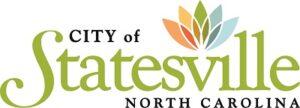
BY MIKE FUHRMAN
Statesville City Council members got a detailed look at the city’s short- and long-term capital needs during last week’s two-day council retreat.
\Balancing the expense of current operations and near-term capital projects will likely require the council to allocate money from the city’s general fund balance.
City Manager Ron Smith began the discussion by estimating that the city’s general fund would increase by about $1.2 million in FY 2025-2026.
But inflation, lower than expected sales tax revenues, and new debt service on the Woody T. Woodard Memorial Fire Station and a new sanitation vehicle, will create challenges for the staff and council to meet the city’s needs.
Fortunately, Smith said, the city has about $21.8 million in unassigned fund balance. Council could allocate $10.1 million from that fund to meet current operations and capital expenses and still have healthy reserves equal to 25 percent of the annual general fund budget, he added.
“That’s your savings account,” he explained. “That’s where we have options to pull for various things.”
Over the course of the two-day retreat, Smith and senior managers discussed major projects on the horizon and asked council members to set budget priorities for the coming year and beyond.
Council members said they prioritized investing in city employees and public safety.
Investing in Employees
Council members expressed support for a 3 percent cost-of-living increase for all city employees — if the city can afford it, along with a plan to decrease the premiums employees pay for dental insurance, a career development plan for some firefighters, and pay increases for part-time employees.
The council also supported a proposal to provide up to three days of paid bereavement leave for employees who lose a close family member.
As they get a better handle on the budget, council members will also consider proposals to offer a health insurance stipend to city retirees and whether to fully implement a market pay study.
Public Safety
The council agreed to set aside $2 million from the fund balance for a new fire station 5 – which has been in the planning stage for at least five years. The total cost, including land acquisition, could exceed $11 million. Staffing the new station will also cost an estimated $1.5 million per year.
Police Chief David Onley has requested to forego purchasing new patrol vehicles in 2025-2026 and instead spend $370,000 on a Bearcat armored tactical vehicle. The bulletproof vehicle is needed for situations when officers face fire from high-capacity weapons, Onley said.
Wastewater Treatment
The city is on the verge of having to plan for a major expansion of the Fourth Creek Wastewater Treatment Plant, which could cost as much as $200 million.
The plant, which has a capacity of 6 million gallons per day, currently treats 4.26 million gallons per day, which is 71 percent of its capacity.
When residential and industrial growth pushes that number to 80 percent, the city must begin actively planning for expansion.
In order to delay that expansion, the city is in the planning stages of installing a new pump station to divert up to 2 million gallons of wastewater per day from the Fourth Creek Plant to the Third Creek Wastewater Treatment Plant, which has more capacity.
That comes with a price tag that would be as much as $14 million.
“It buys us time, but it is still an expensive purchase,” Smith said.
Capital Projects
In addition to the new fire station, city department heads have requested funding for $7.5 million in capital projects, including $1.9 million for a new fire truck and $1.3 million for rerouting Bethlehem Road.
Among the other requests are funding for a new swimming pool, improvements to the city-owned greenway system and major upgrades to McClure Park.
Smith indicated that most of those projects would have to be delayed until after construction of the fire station unless the city finds an additional source of revenue.
Possible Revenue Streams
Water & Sewer Rates
To pay for the necessary upgrades in the wastewater treatment system, a consultant has proposed the city implement a series of increases to water and sewer rates as part of a 10-year plan, beginning with a 22 percent jump in 2025-2026, followed by smaller increases for six years.
“What can you tolerate?” Smith asked the council.
Council members seemed to support several years of 8 percent increases. An 8 percent increase would equate to about $6.20 cents a month for the typical residential customer.
Vehicle Tax
The city manager broached the idea of charging an annual $10 tax on all registered motor vehicles to raise money for road improvements and greenway and sidewalk upgrades.
The city’s road network currently has a rating of 55 out of 100. It will cost about $2 million to maintain that rating over the next few years, according to one estimate.
The tax would generate an estimated $250,000 annually.
Councilman Joe Hudson said the proposal would not sit well with residents.
“I think people will show up with pitchforks, ropes and burning torches,” he said.
Council members unanimously rejected this idea.
Stormwater Fee Increase
After learning that the city has been using stormwater reserves to pay for emergency repairs and will not have funds needed for several major culvert replacements, council members agreed to raise the stormwater fee by 30 percent, beginning January 1, 2026.
For most residential customers, the fee will increase from $4.70 per month to $6.20 per month. Large commercial and industrial customers will face significant increases in their monthly bills.
Proposed Bond Financing
The city manager also pitched the idea of asking voters to approve three general obligation bonds to pay for transportation ($11 million), parks ($9.5 million) and public safety projects ($15.5 million).
Among the projects are construction of the Absher Park Loop ($4 million), general street paving ($2 million), replacement of the Museum Road Bridge ($2 million), swimming pool ($5 million), McClure Park ($3.5 million), fire station 5 ($7.5 million), fire station 6 ($6 million) and fire apparatus ($2 million).
“These are things that are not easily going to fit in our budget in the next five to 10 years,” Smith said.
If voters approved all of the projects, the city council would have to raise the property tax by 6.6 cents for 20 years.
Council members did not express an opinion on this strategy.




Reading this pretty much makes me feel nauseous. Our city says they care about their employees but their actions say something much different. Our city council is uninformed, at best, and our city leadership apparently loves keeping them in the dark. Not a good recipe for success.
The city seems to look at no other options than raising prices on the community, in every area, when there are so many other options. It’s a shame we don’t have innovative and forward thinkers in the positions that matter. They, as a first option, decide to raise prices and eliminate jobs and lower quality of service, rather than use innovative cost saving that would benefit the entire community. It’s pretty disappointing and very sad.